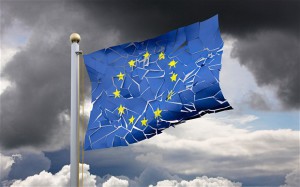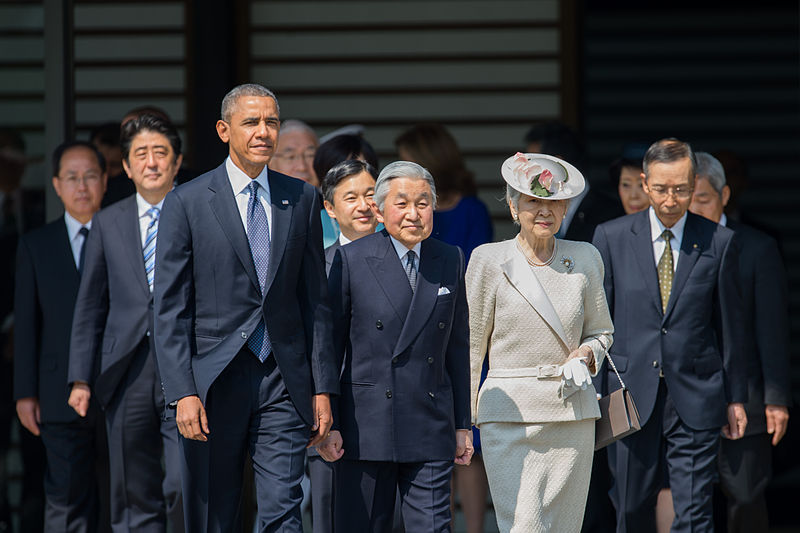
In late May, the European Central Bank (ECB) hosted a forum in Portugal to discuss monetary policy, but also on the agenda was the future of the ‘Euro-Zone’, the collection of European countries that use the Euro as their currency. At the forum, European leaders cautioned that further resolve in the face of Europe’s economic stagnation is necessary to save the ‘European project.’ This ongoing economic crisis has many roots and has affected each stateery differently. However, the crisis shares a common factor in all nations: the Euro.
The Euro has its roots in the great project of European integration that began in the years immediately after the Second World War. European politicians, led by France and West Germany, sought to integrate the continent’s economies in order to prevent the outbreak of future conflict and build a prosperous, democratic future for the European continent. Formal integration began with the European Coal and Steel Community (ECSC) in 1952. The European project encompassed both ‘widening’, integrating more countries into the political-economic architecture of ‘Europe’, and ‘deepening’, increasing the level of integration.
European expansion, which occurred through periodic bursts of political activity, relied on ‘path dependence’: as institutions and sectors of the economy were integrated, problems appeared in related areas, with further integration required to fix the problems created by previous integration. This sparked demands from many Europeans for more direct accountability of European institutions to individual citizens, furthering political integration alongside the growing economic union.
While a single pan-European currency had been imagined as a pillar of European unity since the 1960s, the Euro was only seriously considered following the end of the Cold War. The Maastricht Treaty of 1992, which established the European Union (EU) as an institution, also led to the creation of the Euro in 1999. Not all EU states qualified for or chose to join the currency union, although many new Eastern and Central European EU members pegged the value of their currency to the Euro.
The single currency had a few goals. First, there are numerous economic transaction costs with multiple currencies: people must exchange money when they wanted to travel or buy foreign goods, and changing exchange rates, the value of a country’s currency in relation to other countries’ currencies, means there is more uncertainty in the price of goods. Second, the single currency prevented countries in the European common market from competing with each other on exchange rates, an economically harmful practice. Finally, a currency union, with the same money from Paris to Athens, was a potent political symbol of harmony.
Still, many economists opposed the Euro’s creation, claiming that the Euro-Zone was not an ‘optimal currency area’: less competitive states’ money would be overvalued, while wealthy states’ money would be undervalued. As well, the union lacked united banking controls or money transfers from richer to poorer countries, something common to most currency unions. Political critics decried the loss of sovereignty entailed by the currency union, which angered nationalists. Still, on 1 January 1999, the Euro came into effect, with eleven national currencies abolished over the next three years and a number of new countries added over the next decade.

The results of monetary integration became apparent relatively quickly. The currency union caused the interest rate for borrowing by governments and consumers in ‘southern’ countries like Italy, Spain and Greece to fall dramatically, as markets saw their debt, denominated in Euros, as much safer than beforehand. This made it much cheaper to borrow. Inflation rose, as cheap money sparked rising prices. Banks throughout the Euro-Zone lent freely across international lines, financing, among other things, Greek government debt, vacation homes in Spain and housing in Ireland. With no unified bank regulator, banks were able to skirt oversight, build up massive debts and engage in other risky behaviors, while secure in the belief that the EU, ECB and national governments would backstop major losses to avoid financial calamity. This ‘moral hazard’ encouraged economically bad behavior and the formation of a massive debt bubble.
Meanwhile, as bankers lent generously, trade deficits emerged between the north and south. Northern states such as Germany were more efficient and productive in manufacturing. Without the protection of a low exchange rate, factories in Italy and other southern countries were outcompeted and forced to shed jobs or close. However, to most observers, it appeared that Europe’s economy was booming. Governments cut taxes, increased spending, and vacillated on unpopular reforms that challenged entrenched interests, particularly in Greece. Most governments though were reasonably fiscally responsible; as few observers identified the economic boom as a bubble waiting to pop, there was no reason to drastically cut spending. For example, Spain’s government, on the eve of the 2008 financial crisis, was running a large budget surplus.
Yet, the party had to end eventually. The 2008 financial crisis mostly affected the United States, but the worldwide recession that resulted hit Europe hard. Still, for the first year of the financial crisis, the Euro was even considered a safe haven currency. However, by the end of 2009, investors began to question the ability of some southern European countries (along with Ireland) to pay their national or ‘sovereign’ debts back. Many of these countries’ banking systems had needed rescuing during the crisis, placing huge debt burdens on the government. Once the doubts began to spread, all bets were off.




